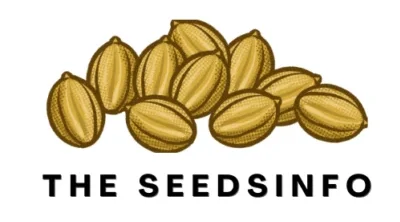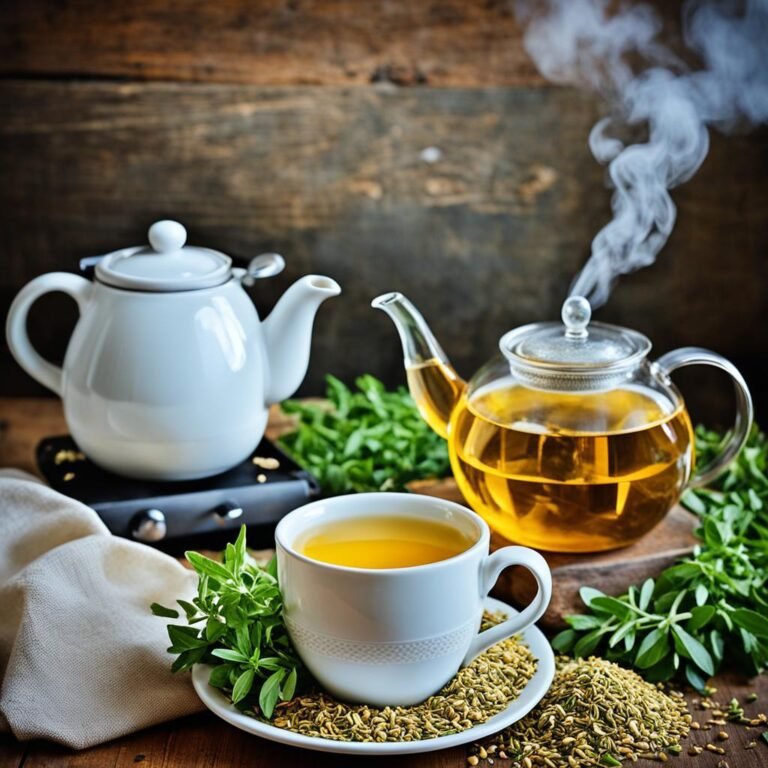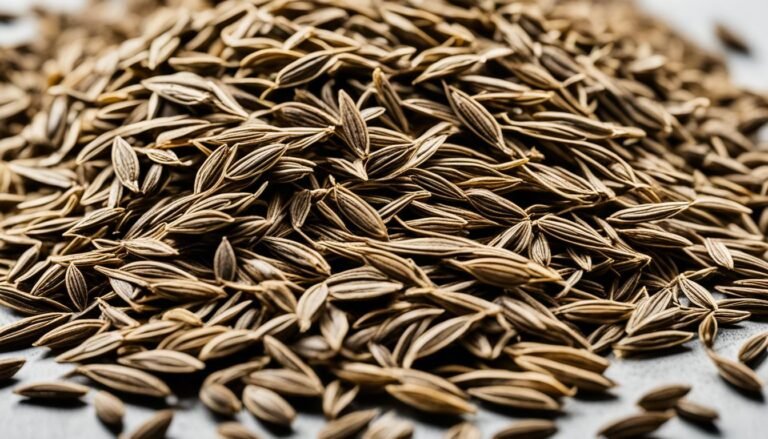Caraway plant: Guide to grow caraway
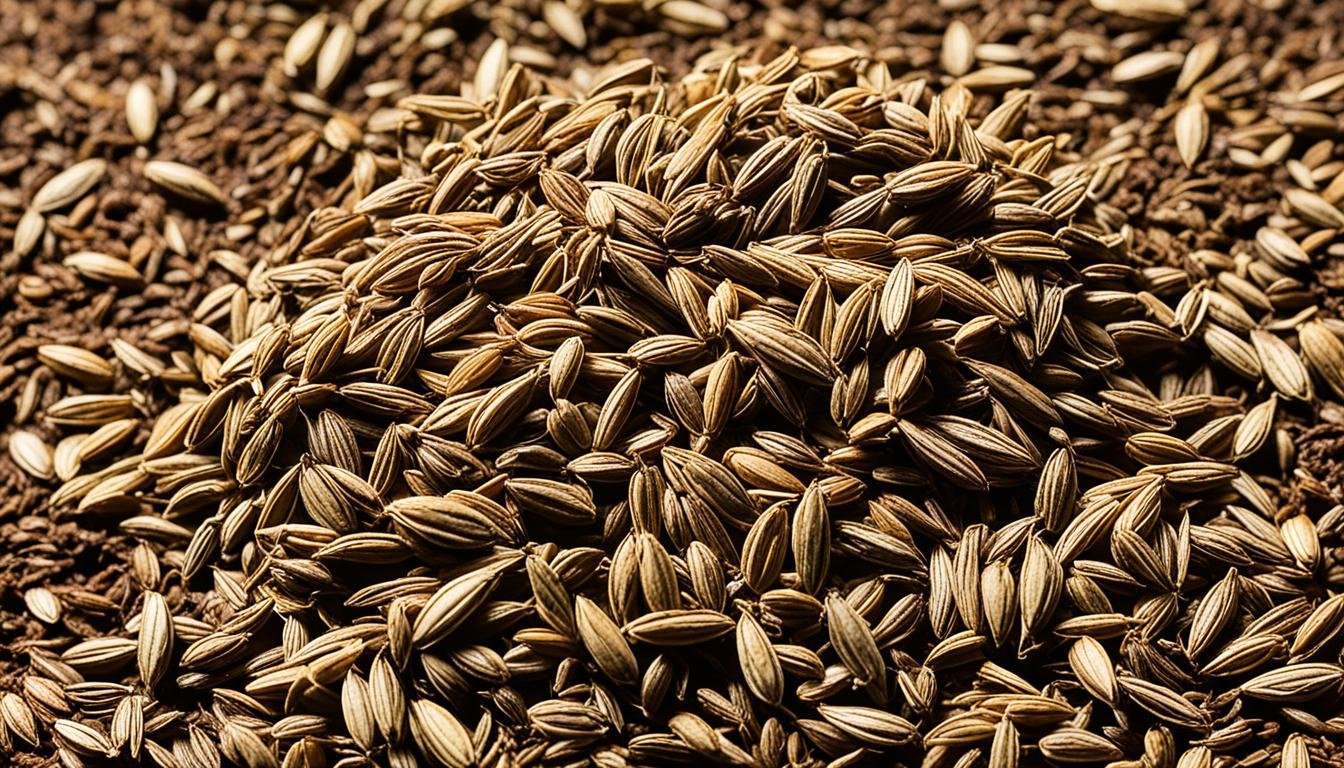
Caraway, known as Carum carvi, is a versatile herb with many uses. Its seeds are loved for their unique flavor, which is a mix of earthy, citrusy, and slightly peppery. Not only the seeds but also the leaves, stems, seeds, and roots of the caraway plant are safe to eat.
Caraway is a biennial, meaning it takes two years to complete its life cycle. In the first year, it grows carrot-like leaves. In the second year, it blooms and produces seeds. If you want to grow this tasty and simple herb in your garden, this guide will help you do it right.
Introduction to Growing Caraway
Caraway (Carum carvi) is a biennial plant that belongs to the carrot family. In its first year, it grows foliage like carrots and a long taproot. By the second year, it grows much bigger, with more foliage and sturdy stems. Small white flowers appear, leading to the small, hard caraway seeds used in cooking.
Overview of Caraway Plant
The caraway plant has a unique licorice-like smell and taste. You can eat all parts, like leaves, flowers, seeds, and roots. It’s a biennial herb, living two years before it completes its life cycle.
Benefits of Growing Your Own Caraway
- Access to fresh, flavorful caraway herb and seeds
- Ability to harvest leaves, seeds, and roots at their peak freshness and flavor
- Relatively low-maintenance plant once established
- Adds visual interest to the garden with its feathery foliage and delicate white caraway flowers
- Provides the opportunity to enjoy the benefits of growing caraway at home
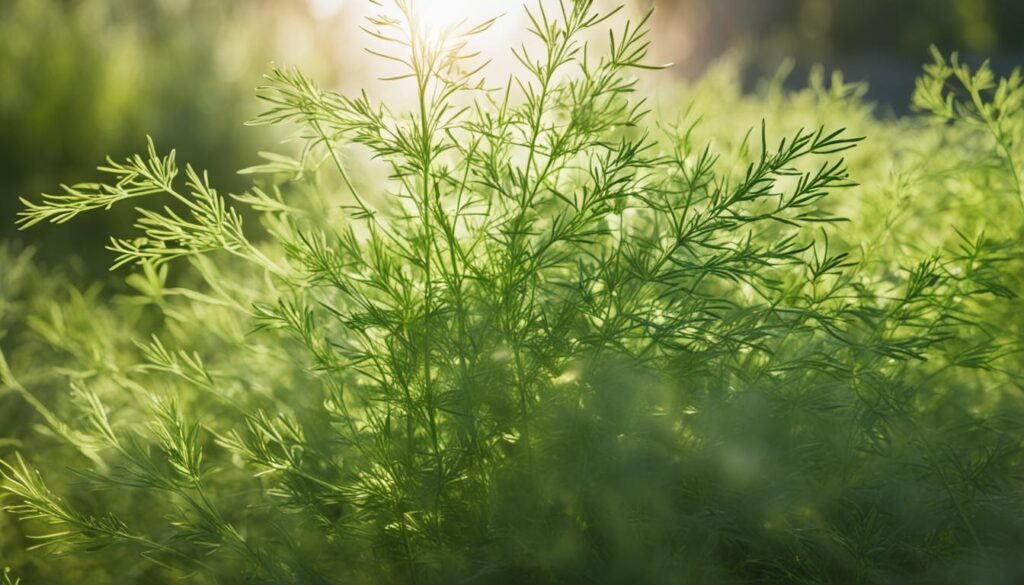
Growing your own caraway plant means you always have this versatile herb on hand. Homegrown caraway is incredibly fresh and flavorful. It’s a great addition to any herb garden or kitchen.
Choosing the Right Caraway Seeds for Planting
Choosing the right caraway seeds is key to growing your own. There are many types of caraway seeds out there. You should pick based on your climate, how you plan to use them, and what you like. Let’s look at what to think about when picking caraway seeds.
First, know the different caraway seed varieties available. Caraway plants are in the Apiaceae family and can be annual or biennial. Annual types do well in warm areas and can produce seeds in one season. Biennial types take two seasons to fully mature and produce umbels or seeds.
When purchasing caraway seeds, choose high-quality, fresh seeds from a trusted supplier. Look for seeds with a germination rate of over 85%. This means they will likely grow well. Also, think about if the seeds you choose will grow well in your area.
If you want to use your caraway for cooking or medicine, pick seeds that fit your needs. Some seeds are better for certain tastes or uses. This way, you get the most out of your homegrown caraway.
Caraway seeds can stay good for up to a year if kept cool and dark (4-10°C). So, you can buy seeds for future seasons. This ensures you have a steady supply of caraway every year.
| Caraway Seed Variety | Life Cycle | Canada Hardiness Zone | Days to Maturity | Planting Depth | Plant Spacing | Growth Habit |
|---|---|---|---|---|---|---|
| Carum carvi | Biennial | 5-9 | Leaves 75 days / Seeds on the second year | 1 cm | 20-30 cm | 30-60 cm tall |
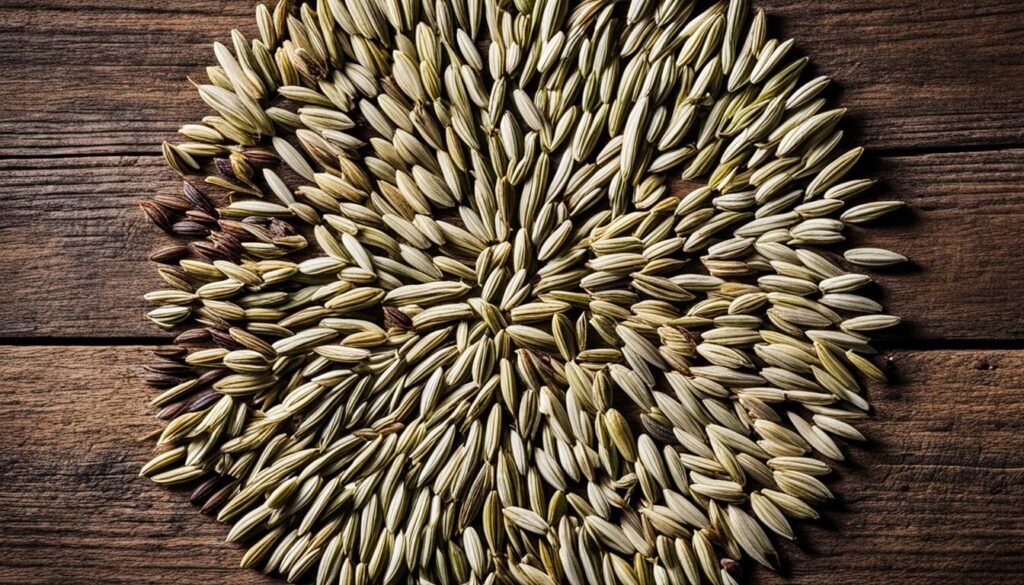
By thinking about these things and doing your homework, you canselect the perfect caraway seedsfor your garden. This way, you can enjoy the tasty and versatile benefits of this amazing herb.
Preparing the Soil for Caraway Cultivation
Caraway is a versatile herb that does well in well-drained, rich soil. To make the best growing spot for your caraway plants, prepare the soil before you plant the seeds.
Ideal Soil Conditions for Caraway
Caraway likes well-drained, sandy soil with a pH between 6.0 and 7.0. It can grow in regular garden soil but does best in loose, loamy soil rich in organic matter. Make sure the soil is weed and stone-free before planting.
Amending the Soil with Compost
Adding aged compost to the soil is a great way to get it ready for caraway. Compost helps with drainage, adds nutrients, and makes the soil perfect for caraway’s deep roots. Mix 2-4 inches of compost into the top 6-8 inches of soil before planting the seeds.
By spending time to amend the soil and improve the growing conditions, you’ll help your caraway plants grow well. This way, you’ll get a big harvest of these tasty seeds.
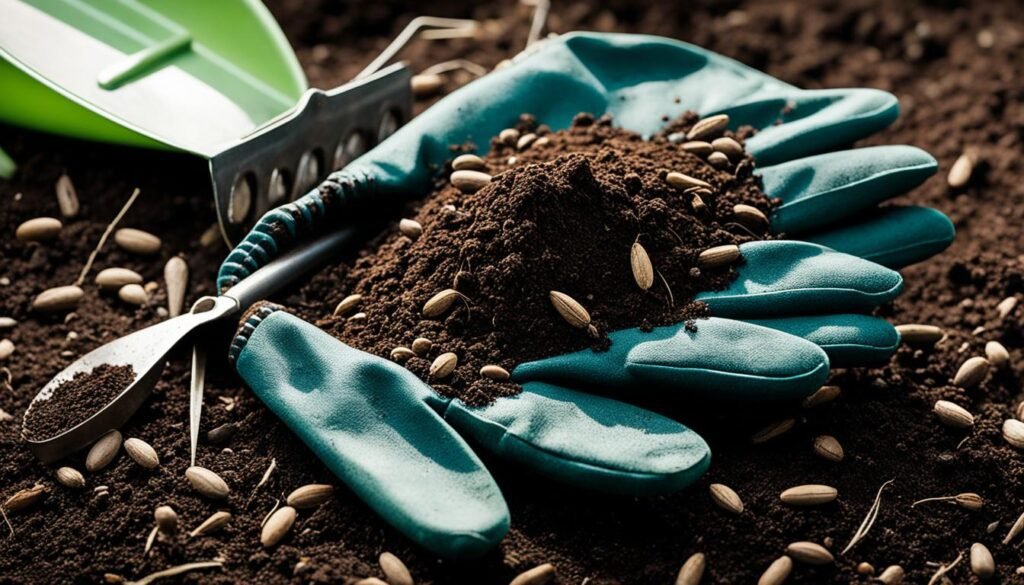
Sowing Caraway Seeds for Planting
There are two main ways to grow your own caraway: starting caraway seeds indoors or direct sowing them in the garden. Each method has its benefits. Let’s look at both options.
Indoor Seed Starting versus Direct Sowing
Start your caraway seeds indoors about 3-4 weeks before the last frost in your area. This gives them a jump start before moving them outside. Put the seeds in biodegradable pots or trays, and cover them with a thin layer of vermiculite. Caraway seeds germinate in 7-14 days at 70°F.
For direct sowing, spring or autumn are the best times. Just plant the caraway seeds about ¼ inch deep in your garden. This method skips the transplant step but might make the plant take a bit longer to grow, about 70 days.
Proper Planting Depth and Spacing
It’s key to plant caraway seeds at the right depth and distance apart, no matter how you sow them. Caraway seeds should go down about ¼ inch deep. For spacing, keep plants 8-12 inches apart, with rows 18-24 inches apart. This helps the plants grow well and prevents them from getting too crowded.
When the seedlings are 4 inches tall, thin them to the right distance. Proper spacing is important for the caraway plants to grow well and give you lots of tasty seeds and leaves.
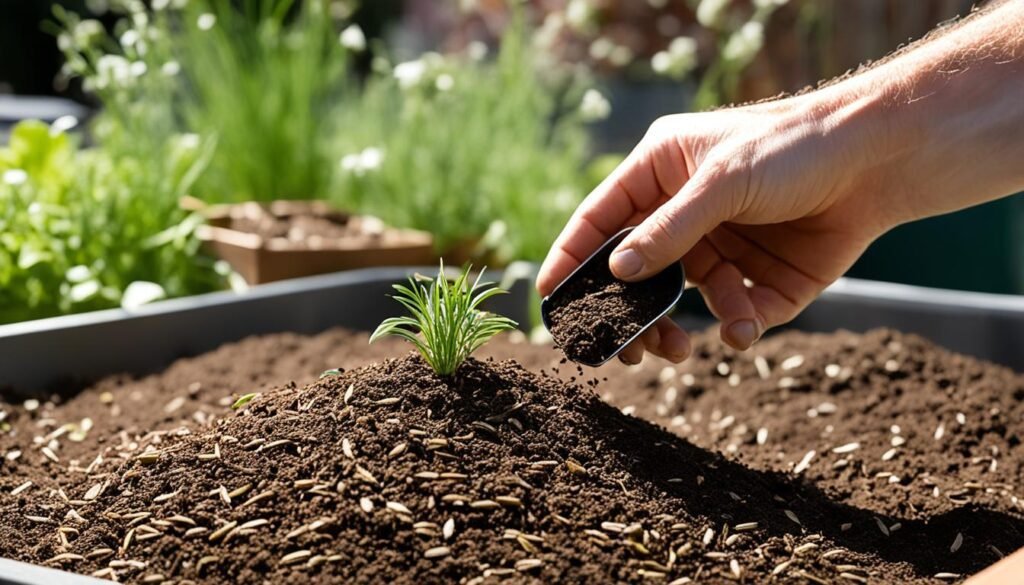
Caring for Caraway Plants
Watering Requirements
Proper watering is key for your caraway plants to thrive. Water them regularly until they grow strong. Make sure the seedlings stay moist.
Once they’re strong, caraway can handle some dryness. But, water them when the soil feels dry. Don’t overwater, especially when they’re making flowers and seeds.
Fertilizing Needs
Caraway plants do well with a little food. Feed the seedlings when they’re 3 inches tall and again when they start flowering. Adding aged compost in the middle of the season helps too.
Caraway doesn’t need a lot of food, but some extra help is good. It makes them grow strong and produce more seeds.
| Watering Caraway | Fertilizing Caraway |
|---|---|
| Water regularly until plants are established Avoid letting seedlings dry out Tolerate periods of dryness once established Water when soil starts to dry out Avoid excessive watering during flowering and seed formation | Lightly fertilize seedlings at 3 inches tall Fertilize again when flower shoots appear Side dress with aged compost in mid-season Caraway does not require heavy feeding Supplemental feeding supports growth and seed production |
Companion Planting with Caraway
Caraway is a great addition to any garden. It grows well with many vegetables, using up little space and resources. Plus, its flowers draw in helpful insects like wasps, which keep pests away.
Beneficial Companions for Caraway
Here are some top plants that go well with caraway:
- Peas – Caraway and peas are perfect together, using resources wisely.
- Tomatoes – Caraway and tomatoes can be neighbors, without any issues.
- Other members of the carrot family – Caraway is friends with carrots, parsnips, and fennel.
But, don’t plant caraway near fennel or dill. They can mix their pollen and change the taste of your plants.
| Companion Plant | Benefits |
|---|---|
| Peas | Caraway and peas don’t compete for resources, making them a compatible pair. |
| Tomatoes | Caraway can be grown near tomato plants without interfering with their growth. |
| Carrots, Parsnips, Fennel | Caraway gets along well with other members of the carrot family. |
Adding caraway companion plants to your garden creates a healthy caraway polyculture. This method helps your garden grow better and keeps pests away naturally. It’s a smart way to make your garden more sustainable and productive.
Pests and Diseases Affecting Caraway
Caraway is a tough crop, but it can face pests and diseases. Knowing about these issues helps gardeners grow a healthy crop. By being proactive, you can have a great caraway harvest.
Parsley caterpillars and aphids are common pests. You can control them by picking off the caterpillars and using organic soap spray. Leafhoppers can spread the aster yellows virus, causing problems with flowers and seeds. Using neem oil can stop this disease.
| Pest/Disease | Description | Management Strategies |
|---|---|---|
| Carrot Rust Fly | A tiny winged insect that can deform the roots of caraway seedlings, potentially leading to plant death. | Use floating row covers, sticky traps, and diatomaceous earth to deter and control. |
| Aster Yellows | A virus transmitted by leafhoppers, causing yellowing, deterioration, and inhibited fruit production. | Control leafhoppers with neem oil or other organic insecticides. |
| Damping Off | A fungal disease that affects seedlings, causing root rot and foliage death. | Ensure well-drained soil and avoid overwatering to prevent this issue. |
| Phoma Blight | A fungal infection that creates gray or black lesions on caraway stems, potentially preventing seed formation. | Use disease-resistant varieties and practice crop rotation to control phoma blight. |
| Powdery Mildew | A fungal disease that covers leaves and stems with a powdery, white growth, reducing seed production. | Remove affected leaves and apply neem oil or fungicide to manage powdery mildew. |
Keeping your caraway healthy means following good garden practices. This includes rotating crops, getting rid of plant debris, and using disease-free seeds. Also, make sure your soil drains well and water your plants right. This helps your caraway plants fight off pests and diseases better.
caraway seeds for planting
Many gardeners grow caraway seeds for their culinary value. But, the leaves, flowers, and roots are also edible. Harvesting caraway seeds takes time and patience, but it’s worth it.
Harvesting Caraway Seeds
Wait until the flower heads turn deep brown before harvesting. This usually happens about 400 days after planting. Cut the entire flower head with clean scissors or pruners, being careful not to harm the stem. Let the heads dry in a paper bag before taking out the seeds.
Collecting and Storing Caraway Seeds
- Gently rub the dried flower heads to release the crescent-shaped caraway seeds.
- Separate the seeds from any remaining chaff or debris using a fine-mesh sieve or screen.
- Store the cleaned, dry caraway seeds in an airtight container in a cool, dark place. This will help preserve their flavor and aroma.
With the right timing and care, you can enjoy a lot of flavorful caraway seeds. Use them on breads, in teas, or in soups and stews. Homegrown caraway seeds taste better and are fresher.
| Caraway Seed Harvesting and Collection | Caraway Seed Saving |
|---|---|
| Harvest caraway seeds when flower heads turn brown, around 400 days after sowing | Store cleaned, dry caraway seeds in airtight container in cool, dark place |
| Use scissors or pruners to snip entire flower heads, avoiding stem damage | Caraway seeds can maintain flavor and aroma for up to 2 years with proper storage |
| Allow flower heads to fully dry in paper bag before removing seeds | Properly dried and stored caraway seeds are perfect for cooking and baking all year |
Harvesting Caraway Seeds and Other Plant Parts
Caraway is a versatile herb with many edible parts, like leaves, roots, and seeds. Harvesting at the right time is key to enjoying its full flavor.
When and How to Harvest Caraway
You can pick caraway leaves all season, starting in the first year. Just cut off the leaves as you need them, making sure to leave enough for the plant. After the flowers bloom in the second year, you can dig up the taproot, similar to carrots or parsnips.
The best part is the caraway seeds. Harvest them when the seed heads are a deep brown, about a month after blooming. Cut the flower heads and let them dry in a paper bag. This lets the seeds fall off naturally.
Drying and Storing Caraway
After harvesting, dry and store the caraway seeds well. Hang the flower heads upside down in a paper bag to dry. Once dry, sift the seeds to remove any chaff.
Put the dried seeds in an airtight container in a cool, dark spot. They can keep their flavor for up to a year. Use your homegrown caraway in various dishes, like breads, pastries, soups, and stews.
Cooking and Using Fresh Caraway
Caraway seeds have a unique taste that’s earthy, citrusy, and a bit peppery. The caraway leaves also have a special caraway aroma and caraway taste, but it’s milder. Both the seeds and leaves are great for cooking.
Flavor Profile of Caraway
The caraway flavor is a mix of nutty, slightly sweet, and warm spices. It’s savory and a bit sweet, making it perfect for many recipes.
Culinary Uses for Caraway Seeds and Leaves
- Caraway seeds are great in baked goods like breads and pastries. They’re also good in soups, stews, and pickles. You can use them whole or ground to add their unique caraway aroma and caraway flavor.
- The young caraway leaves are perfect for salads, cheeses, and butter. They also work well in soups and stews, adding a gentle caraway taste.
- You can even eat the caraway taproot like a parsnip. It’s another way to use this versatile plant in your cooking.
Caraway is a must-have in the kitchen with its many culinary uses. You can use the seeds, leaves, or roots to add depth and complexity to your dishes.
Conclusion
Caraway is easy to grow and should be in every home garden. It has edible leaves, flowers, seeds, and roots. These parts add fresh, tasty ingredients to your cooking. By following this guide, you can grow your own caraway from seed and enjoy its benefits.
This guide covered the benefits of caraway, like its antioxidants and antimicrobial properties. It also gave an overview of the caraway plant. Whether you want to spice up your cooking or explore caraway in the garden, this info will help you start a rewarding journey.
Caraway grows well in many soils, making it great for all gardeners. Knowing how to plant, care for, and harvest it will let you enjoy its many benefits. Try growing and using this amazing plant in your garden or kitchen.
FAQ
What parts of the caraway plant are edible?
You can eat all parts of the caraway plant. This includes the leaves, stems, seeds, and roots.
Is caraway an annual or biennial plant?
Caraway is a biennial plant. It takes two years to grow. In the first year, it grows foliage and a long taproot. The second year, it gets bigger, produces flowers and seeds.
What is the flavor profile of caraway?
Caraway leaves and seeds taste earthy. They also have a hint of citrus and pepper.
Where can I purchase high-quality caraway seeds for planting?
You can find caraway seeds at garden centers, seed catalogs, and online. Choose fresh, high-quality seeds from a trusted supplier.
What type of soil does caraway prefer?
Caraway likes well-drained, sandy soil with a pH of 6.0 to 7.0. It can grow in average garden soil but does best in rich, loose soil. Adding compost can help with drainage and fertility.
When should I plant caraway seeds?
Start caraway seeds indoors 3-4 weeks before the last frost date. Or, you can plant them directly in the garden in early spring or autumn.
How do I care for caraway plants?
Water caraway plants regularly until they’re established. They can handle some dryness but need water when the soil dries out. Give them a light fertilizer when they’re 3 inches tall and again when they produce flower shoots.
What are some good companion plants for caraway?
Caraway is a great garden companion. It grows well with many vegetables, using few resources. Good friends for caraway include peas, tomatoes, and other carrot family plants.
When and how should I harvest caraway seeds?
Harvest caraway seeds when the flower heads turn brown. Cut the heads, let them dry in a paper bag, then remove the seeds.
How can I use caraway in the kitchen?
Use caraway seeds in baked goods, soups, stews, and sauces. Add the leaves to salads, cheeses, butter, and cooked dishes. Both seeds and leaves have a unique caraway taste and aroma.
